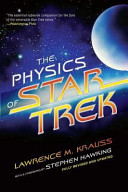Pauli Exclusion Principle
In the three-dimensional space in which we live, elementary particles are designated as fermions and bosons, depending on their spin. We associate with each variety of elementary particle a quantum number, which gives the value of its spin. This number can be an integer (0,1, 2,... ) or a half integer (1/2, 3/2, 5/2,...). Particles with integer spin are called bosons, and particles with half integer spin are called fermions. The quantum mechanical behavior of fermions and bosons is different: When two identical fermions are interchanged, the quantum mechanical wavefunction describing their properties is multiplied by minus 1, whereas in an interchange of bosons nothing happens to the wavefunction. Therefore, two fermions can never be in the same place, because if they were, interchanging them would leave the configuration identical but the wavefunction would have to be multiplied by minus 1, and the only thing that can be multiplied by minus 1 and remain the same is 0. Thus, the wavefunction must vanish. This is the origin of the famous Pauli exclusion principleoriginally applied to electronswhich states that two identical fermions cannot occupy the same quantum mechanical state.
Notes:
Two identical fermions cannot occupy the same quantum mechanical state.
Folksonomies: physics quantum physics
Taxonomies:
/science/physics (0.652506)
/science/mathematics/arithmetic (0.434527)
/hobbies and interests/magic and illusion (0.378688)
Keywords:
identical fermions (0.923691 (negative:-0.314989)), quantum mechanical state. (0.702352 (neutral:0.000000)), integer spin (0.568739 (neutral:0.000000)), quantum mechanical wavefunction (0.556855 (negative:-0.505848)), famous Pauli exclusion (0.514103 (neutral:0.000000)), quantum mechanical behavior (0.438573 (negative:-0.311008)), bosons (0.435615 (negative:-0.311008)), half integer (0.357081 (neutral:0.000000)), elementary particles (0.353958 (neutral:0.000000)), three-dimensional space (0.330182 (positive:0.220725)), elementary particle (0.299554 (neutral:0.000000)), quantum number (0.244420 (neutral:0.000000)), minus (0.224699 (negative:-0.525396))
Entities:
Pauli:Person (0.905370 (neutral:0.000000))
Concepts:
Spin (0.953961): dbpedia | freebase | yago
Boson (0.912939): dbpedia | freebase
Fermion (0.877697): dbpedia | freebase
Electron (0.864348): dbpedia | freebase | opencyc
Photon (0.829828): dbpedia | freebase
Particle physics (0.777445): dbpedia | freebase | opencyc
Standard Model (0.723698): dbpedia | freebase | yago
Quantum field theory (0.709645): dbpedia | freebase | opencyc





